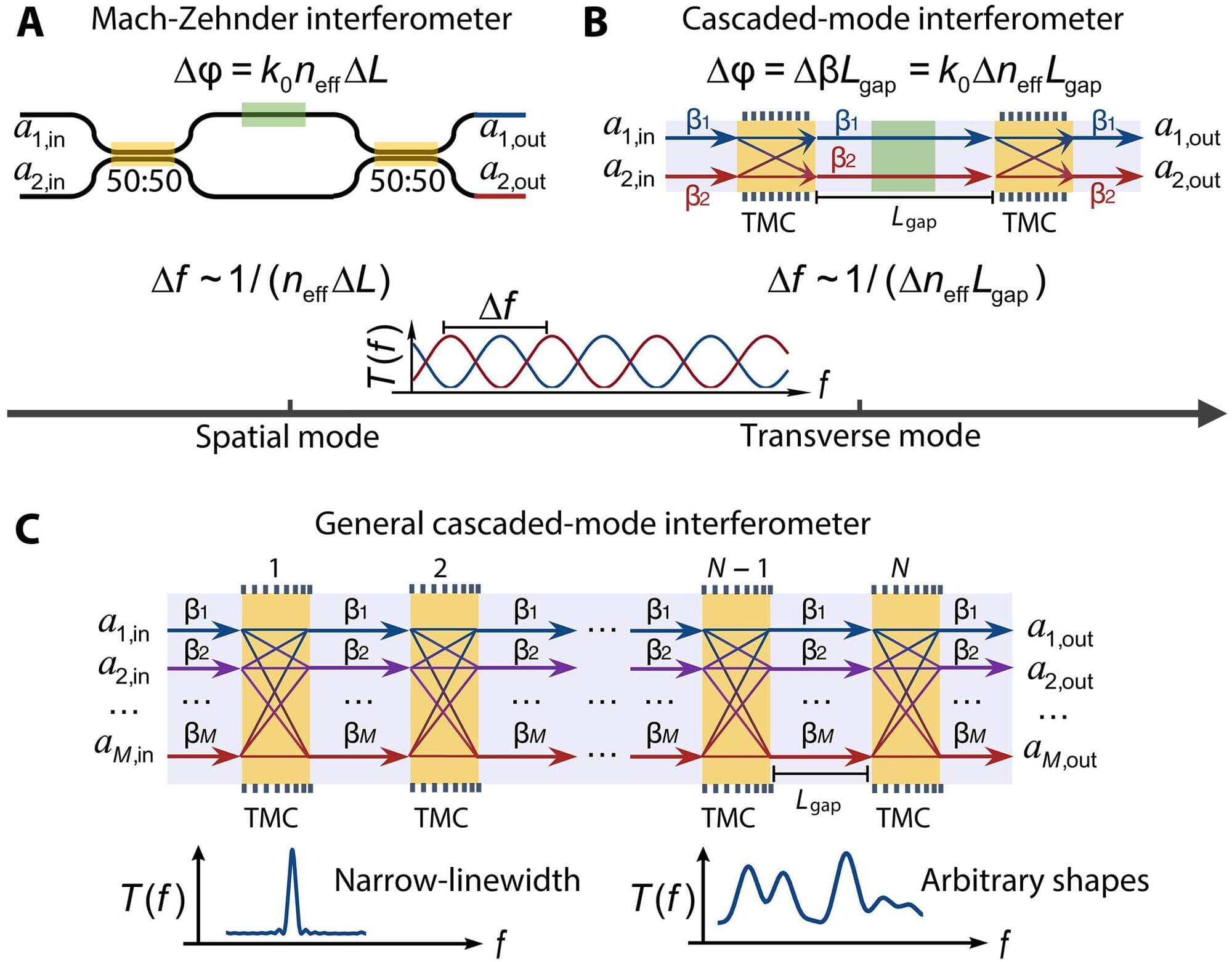Interferometers, devices that can modulate aspects of light, play the important role of modulating and switching light signals in fiber-optic communications networks and are frequently used for gas sensing and optical computing.
Now, applied physicists at the Harvard John A. Paulson School of Engineering and Applied Sciences (SEAS) have invented a new type of interferometer that allows precise control of light’s frequency, intensity and mode in one compact package.
Called a cascaded-mode interferometer, it is a single waveguide on a silicon-on-insulator platform that can create multiple signal paths to control the amplitude and phase of light simultaneously, a process known as optical spectral shaping. By combining mechanisms to manipulate different aspects of light into a single waveguide, the device could be used in advanced nanophotonic sensors or on-chip quantum computing.
